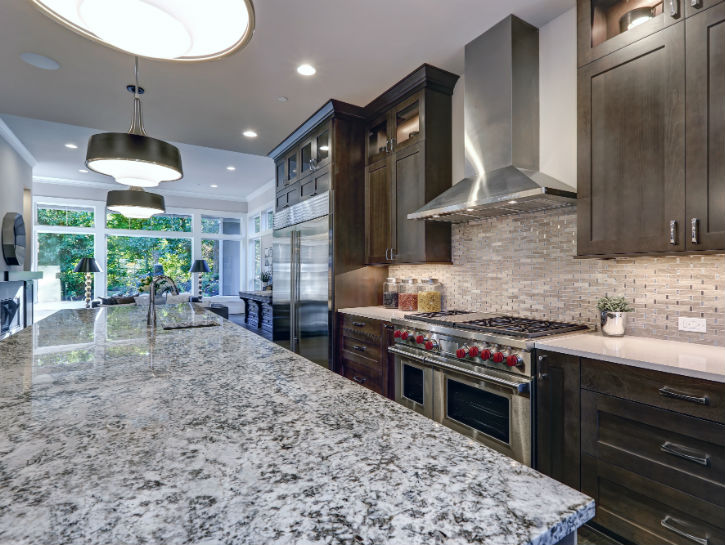Choosing between marble or granite countertops — two natural stone materials with their own benefits and setbacks — is among one of the many challenging decisions when designing your kitchen. If you’re torn between the two, here are some things to keep in mind to help you make the right decision:
Marble Countertops

alabn/Shutterstock
Though many believe it can be stained easily, the underlying issue with marble is less about staining and more about etching. An etch is formed after a marble surface is exposed to an acidic substance, causing corrosion of the calcite in the stone and creating a lighter-colored “stain.” On the contrary, it isn’t a stain at all, but rather an exposed piece of raw, unpolished marble, which is naturally whiter than the top layer. Though both granite and marble are porous, it is far easier to etch marble than it is granite.
Given its high susceptibility to such damage, a marble countertop without etches and imperfections in a kitchen is a total rarity, unless you eat out on most occasions. Things like coffee, vinegar, and soda are stored and enjoyed in the kitchen, so keeping your marble as perfect as it was upon installation can be a serious chore. That’s why marble countertops are best suited in bathrooms, or if you’re truly set on featuring marble in your kitchen, using the stone as a separate baking station or as an additional pullout surface would considerably lengthen the lifespan of it.
Granite Countertops

Granite is an igneous rock that forms from magma that is slowly crystallized beneath the Earth’s surface, making it a tough and visually appealing rock. It’s favored by many regarding using natural stones for countertops.
Because granite is composed of different minerals, granite countertops look like a smoother blend of different colors, as opposed to the swirls and patterns of marble. Unfortunately, while marble countertops have a wide variety of color selections, granite only has around 20 different color varieties revolving around black, white, grey, pink and red.
Granite is worth investing in because it’s durable with proper care, making it a great countertop choice for a long-term home, and it is also heat and scratch resistant. It’s highly recommended to choose granite if you are looking for a stone countertop in your kitchen, as the rock is able to withstand the harsh circumstances that cooking can bring to a countertop while still looking beautiful.
Of the drawbacks that granite has, the cost is probably the biggest one — it can run you about $35 per square foot to $140 per square foot, depending on the rock you choose, who you pay to install it and how much space needs to be covered. Poorly sealed granite can become a home for nasty bacteria, meaning if you don’t have the cash to get a quality installer, it’s best to hold off for your health’s sake.
The Verdict

The rock you choose to create your countertop with will depend on which room in your home you’ll be reworking and on your budget. Marble will look great in a bathroom and won’t be subjugated to the potentially damaging liquids that kitchens have, while granite can be used in any circumstance for its durability, heat-resistance and visual appeal, so long as you have the cash to install it properly. Figure out what your situation is and find the rock that fits your needs.
